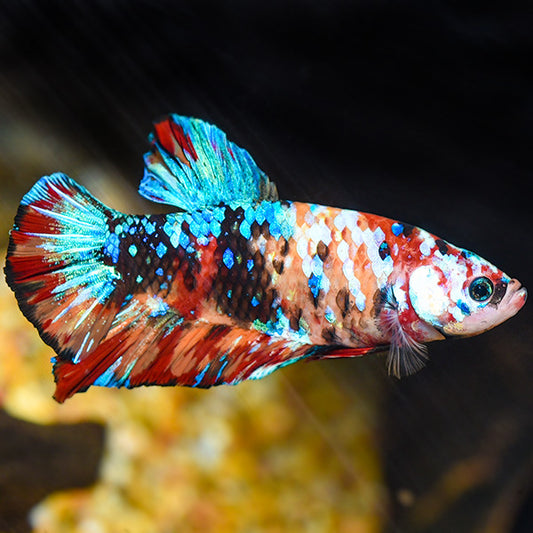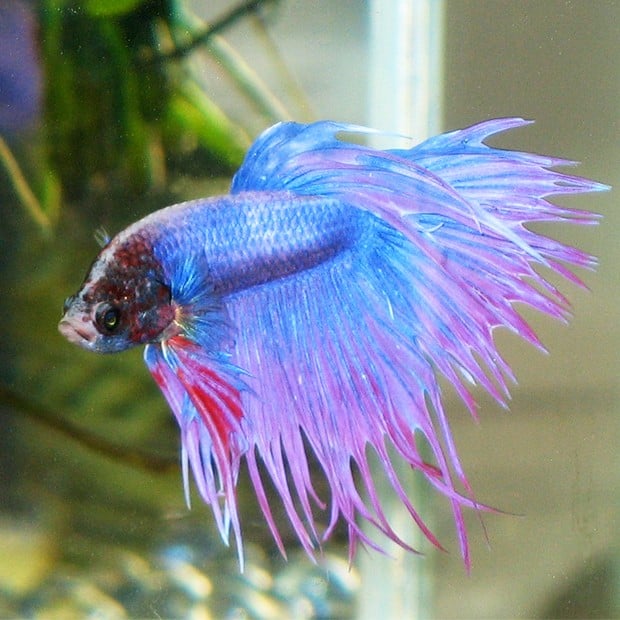Breeding Betta Fish: a Comprehensive Step-By-Step Guide to Efficiently Raising Child Bettas From Eggs to The Adult Years
Breeding Betta fish is a meticulous undertaking that requires careful planning and implementation to make sure the effective advancement of fry from eggs to develop fish. Selecting genetically diverse reproduction couple with preferable attributes is just the start; producing an ideal environment and recognizing the intricacies of the reproducing process are similarly important. As the male Betta faithfully constructs a bubble nest and guards the priceless eggs, the subsequent phases of care and change demand focus to information and understanding of best techniques. Exactly how does one browse the tough yet rewarding course of supporting these vivid animals to their adult years?

Selecting Reproduction Pairs
When starting the journey of breeding Betta fish, picking the right reproduction sets is critical to accomplishing desirable qualities and a healthy and balanced lineage - betta fish. The very first step in this process is to determine the details qualities you wish to boost or maintain, such as color, fin kind, and physique. It is important to choose genetically varied sets to stay clear of inbreeding, which can bring about health problems and unfavorable characteristics
Assess possible breeding candidates very carefully. A healthy and balanced male Betta must exhibit lively shades, an energetic demeanor, and well-formed fins, while the lady should also show vibrant pigmentation and a rounded tummy, suggesting preparedness for spawning. Observing the character of both fish is essential, as hostile or overly reluctant individuals may not breed successfully.
Documentation of family tree is just as crucial. Maintaining documents of the moms and dad fish's ancestry can aid you track hereditary qualities and possible problems. In addition, consult trusted dog breeders or online resources for advice on picking compatible sets. Inevitably, spending time in the choice procedure will considerably boost the chance of creating solid, dynamic spawn that meet your reproduction goals (betta fish).

Preparing the Reproduction Container
Creating an ideal breeding environment is a key action after selecting suitable pairs for Betta fish. The reproduction storage tank need to be especially designed to provide comfort and boost the all-natural breeding habits of the fish. Beginning with a container size of at the very least 10 gallons to make sure adequate space for both the man and women Bettas.
Preserve a mild filtration system to maintain the water tidy while staying clear of solid currents that can worry the fish. Furthermore, an air stone can be included in provide oxygenation without disrupting the water surface area excessive.
Temperature level policy is vital; purpose for a stable variety of 78-82 ° F(25-28 ° C) making use of a trustworthy heating system. The pH level need to be maintained in between 6.5 and 7.5, and regular water adjustments are needed to make certain high water top quality.
Include floating plants or spawning mops to create hiding areas for the lady, while also encouraging bubble useful site nest structure by the male - betta fish. Ultimately, guarantee the container is free from sharp decors and any kind of possible hazards, as the well-being of the fish should constantly be focused on throughout this critical phase of reproduction.
The Breeding Refine
Usually, the breeding process for Betta fish involves a series of distinct and observable actions that show check here readiness for reproduction. The male Betta begins by building a bubble nest at the water's surface, which acts as a website for the fertilized eggs. This nest is essential, as it gives a secure environment for the eggs up until they hatch out.
When the nest is established, the man will certainly present courtship actions, such as flaring his fins and displaying dynamic shades to attract the lady. The female, upon noticing the male's preparedness, will certainly respond by presenting upright red stripes along her body, signifying her receptiveness.
When the women approaches, the male takes part in a breeding dance, commonly causing an embrace referred to as the "spawning." During this accept, the lady launches her eggs, which the male feeds quickly. The fertilized eggs then are up to the bubble nest, where the male thoroughly gathers and returns them to the nest. Following this, the male assumes obligation for securing the nest and guaranteeing the safety and security of the eggs till they hatch, generally within 24-36 hours. This phase is critical in the breeding process, laying the structure for successful fry advancement.
Caring for Betta Fry
Caring for Betta fry needs careful focus to their atmosphere and nutrition to ensure healthy development and advancement. After hatching, Betta fry are extremely tiny and vulnerable, demanding a steady and tidy environment.
Feeding Betta fry is equally vital. Initially, they must be provided infusoria or carefully crushed high-grade fry food, as their mouths are as well small to manage larger fragments. As they expand, you can progressively introduce bigger foods, such as infant salt water shrimp or powdered flakes, to ensure they get ample nourishment. Feed them percentages numerous times a day, taking care not to overfeed, which can result in water high quality problems.
Transitioning to Grownup Bettas
As Betta fry fully grown, transitioning them to adult Bettas is a critical phase that needs mindful management of their atmosphere and social interactions. This process usually begins when the fry reach around 6 weeks old, at which point they can be gradually introduced to a much more structured living setting.
To promote this shift, it is necessary to make certain that the water parameters-- such as temperature, pH, and ammonia degrees-- are optimal and steady. Adult Betta fish thrive in warm water (around 78-80 ° F) with a pH of 6.5 to 7.5. Slowly adjust the fry to these problems to minimize stress and anxiety.
Social communications are one more key variable; man Bettas are infamously territorial and aggressive. As a result, it is suggested to separate males right into private containers as they mature. Female Bettas can be housed with each other, but treatment should be required to monitor for indicators of aggression.
Furthermore, dietary adjustments ought to be made as the fry grow. Include premium pellets and live foods to sustain their growth and health and wellness. By taking care of these aspects properly, our website you can promote a successful transition to the adult years for your Betta fish.

Conclusion
Successful breeding of Betta fish requires careful interest to detail throughout the whole process, from picking genetically diverse sets to providing optimal treatment for fry. Additionally, a well balanced diet and steady adaptation to grown-up settings are crucial for the growth and growth of Betta fish.